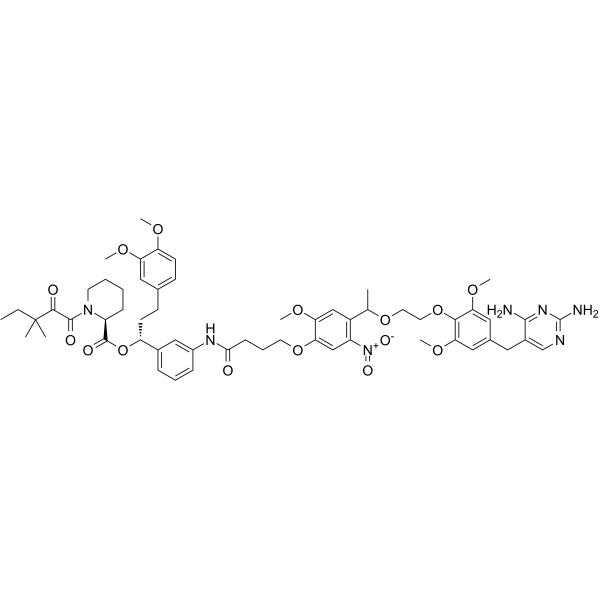FKBP
FKBP (FK506-binding protein) is one of two major immunophilins and most of FKBP family members bind FK506 and show peptidylprolyl cis/trans isomerase (PPIase) activity. Small size FKBP family members contain only FK506-binding domain, while FKBPs with large molecular weights possess extra domains such as tetratricopeptide repeat domains, calmodulin binding and transmembrane motifs. FKBPs are involved in several biochemical processes including protein folding, receptor signaling, protein trafficking and transcription. FKBP family proteins play important functional roles in the T-cell activation, when complexed with their ligands.
FK506-binding proteins 1a and 1b (FKBP1a/1b) are immunophilin proteins that bind the immunosuppressant agent FK506 and AY 22989. FKBP12 is a ubiquitous abundant protein that acts as a receptor for FK506, binds tightly to intracellular calcium release channels and to the transforming growth factor β (TGF-β) type I receptor.
Ziele für FKBP
Produkte für FKBP
- Bestell-Nr. Artikelname Informationen
-
GC34172
AP1867
AP1867 ist ein synthetischer FKBP12F36V-gerichteter Ligand.
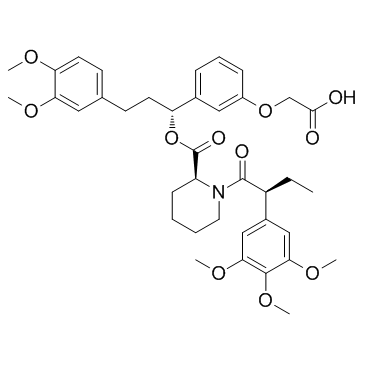
-
GC61745
AP1867-2-(carboxymethoxy)
AP1867-2-(Carboxymethoxy), die auf AP1867 (einem synthetischen, auf FKBP12F36V gerichteten Liganden) basierende Einheit, bindet Über einen Linker an den CRBN-Liganden, um dTAG-MolekÜle zu bilden.

-
GC15586
AP1903
AP1903 (AP1903) ist ein Dimerisierungsmittel, das durch Quervernetzung der FKBP-DomÄnen wirkt. AP1903 (AP1903) dimerisiert den Caspase 9 Selbstmordschalter und induziert schnell Apoptose.
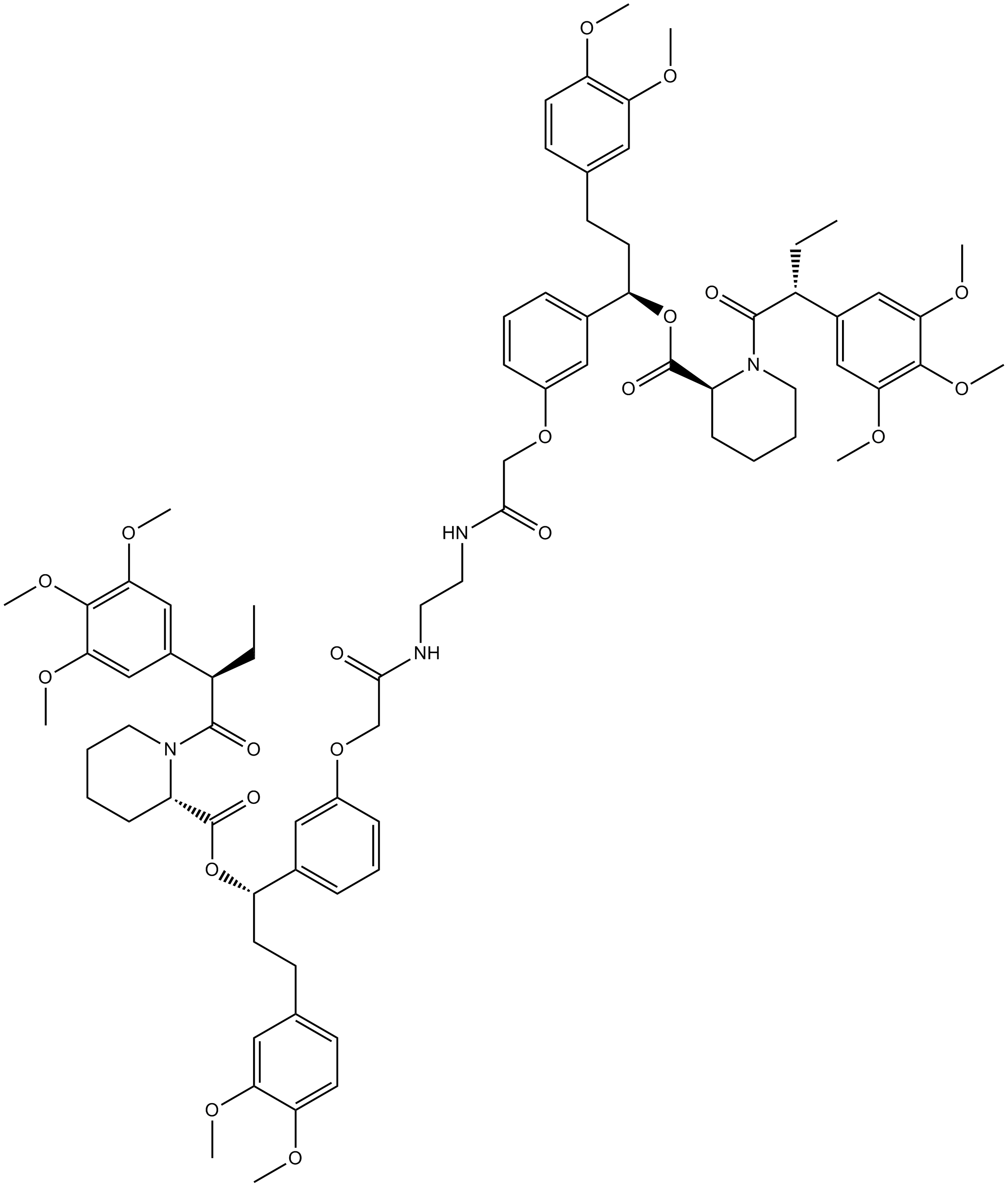
-
GC14498
AP20187
AP20187 (B/B Homodimerizer) ist ein zelldurchlÄssiger Ligand, der zur Dimerisierung von FK506-Bindungsprotein (FKBP)-Fusionsproteinen und zur Initiierung biologischer Signalkaskaden und Genexpression oder zur Unterbrechung von Protein-Protein-Wechselwirkungen verwendet wird.
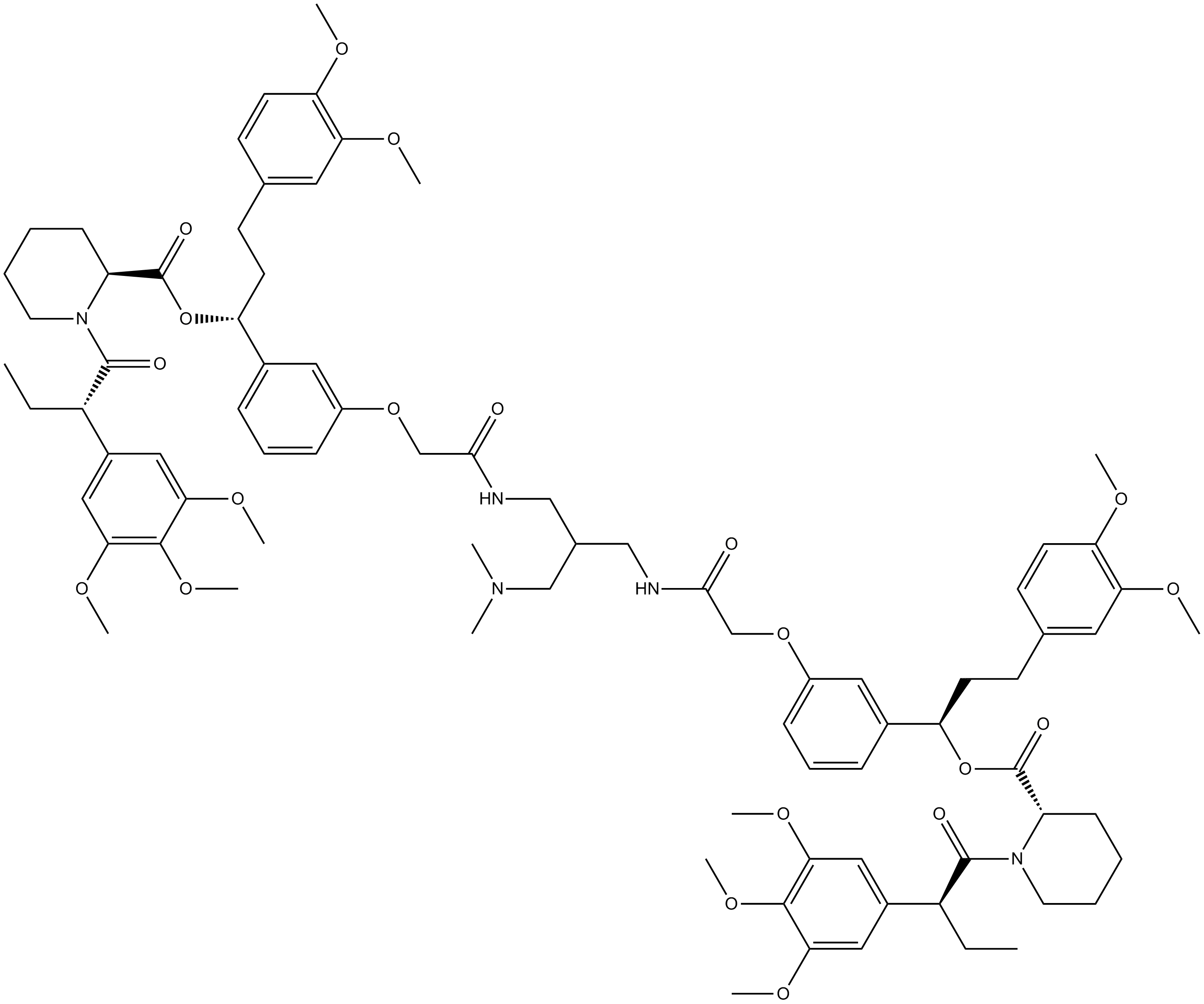
-
GC13215
Ascomycin(FK 520)
A potent macrolide immunosuppressant
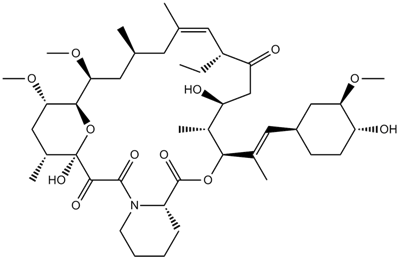
-
GC13601
Everolimus (RAD001)
Ein Rapamycin-Derivat
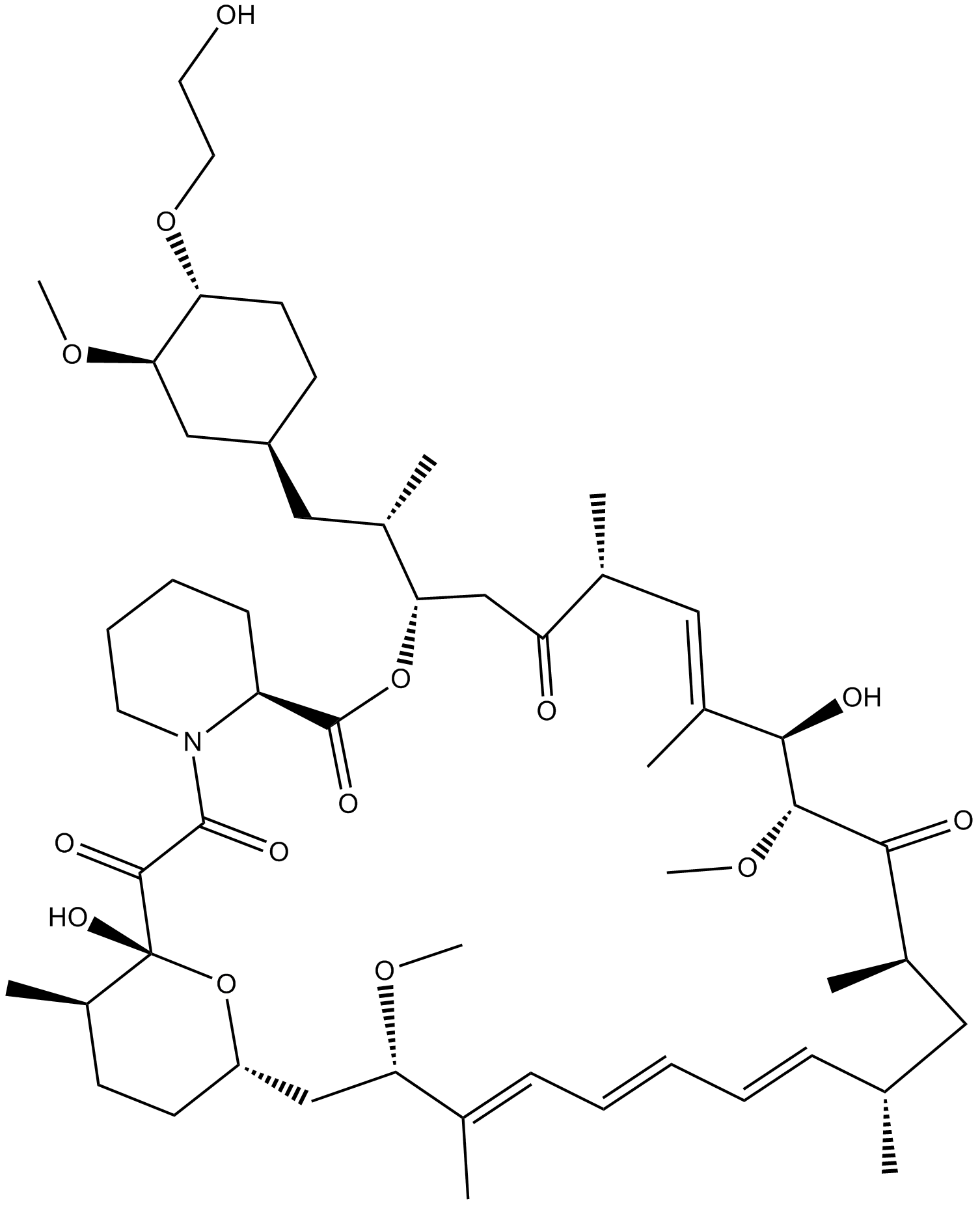
-
GC62186
KB02-SLF
KB02-SLF ist ein PROTAC-basierter nuklearer FKBP12-Abbauer (molekularer Kleber). KB02-SLF fÖrdert den nukleÄren FKBP12-Abbau durch kovalente Modifikation von DCAF16 (E3-Ligase) und kann die Dauerhaftigkeit des Proteinabbaus in biologischen Systemen verbessern. SLF bindet den Ubiquitin-E3-Ligase-Liganden KB02 Über einen Linker, um KB02-SLF zu bilden.
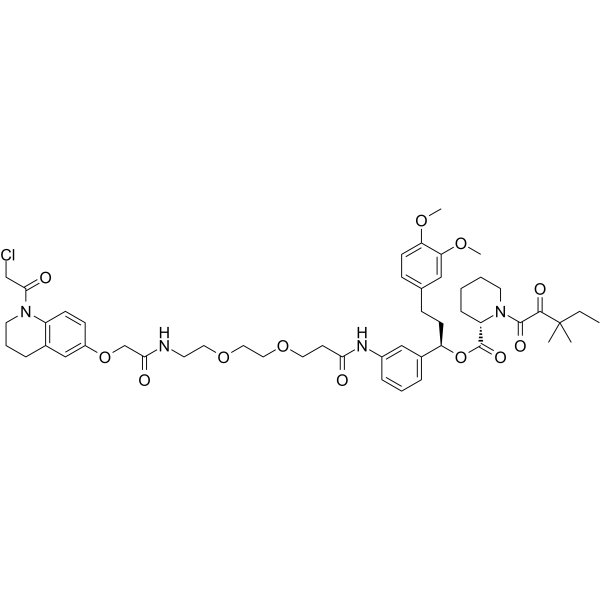
-
GC39503
PROTAC FKBP Degrader-3
PROTAC FKBP Degrader-3 ist ein PROTAC, das eine FKBP-Ligandenbindungsgruppe, einen Linker und eine von Hippel-Lindau-Bindungsgruppe umfasst. PROTAC FKBP Degrader-3 ist ein starker FKBP-Abbauer.
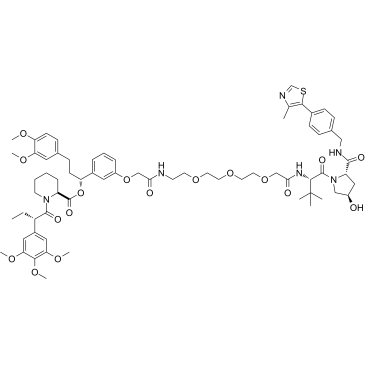
-
GC15031
Rapamycin (Sirolimus)
Ein allosterischer Inhibitor von mTORC1
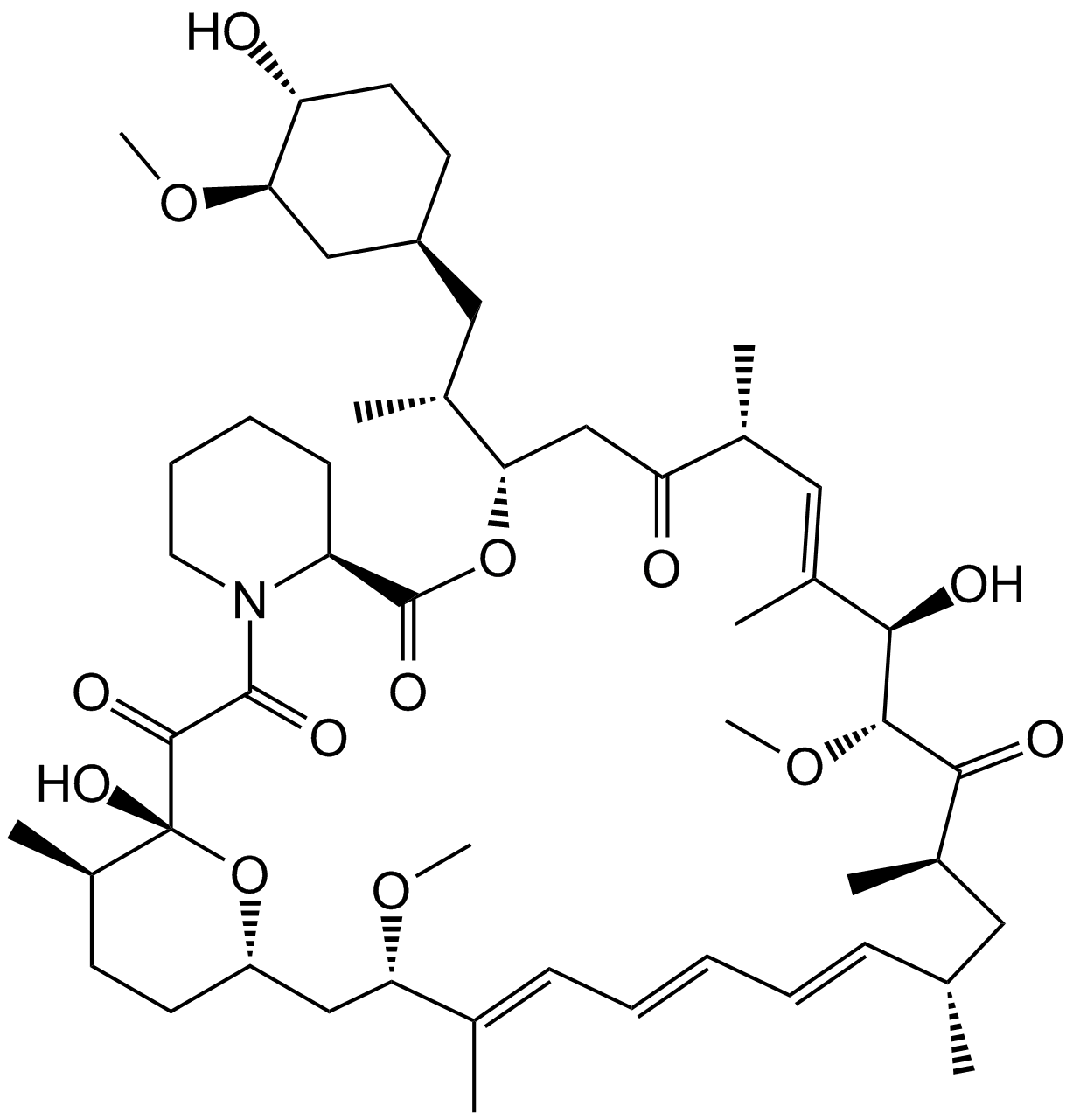
-
GC48027
Rapamycin-d3
Rapamycin-d3 (Sirolimus-d3) ist das Deuterium-markierte Rapamycin. Rapamycin ist ein potenter und spezifischer mTOR-Inhibitor mit einem IC50 von 0,1 nM in HEK293-Zellen. Rapamycin bindet an FKBP12 und wirkt spezifisch als allosterischer Inhibitor von mTORC1. Rapamycin ist ein Autophagie-Aktivator, ein Immunsuppressivum.

-
GC33699
SAFit1
SAFit1 ist ein FK506-bindendes Protein 51 (FKBP51)-spezifischer Inhibitor mit einem Ki von 4±0,3 nM.

-
GC34093
SAFit2
SAFit2 ist ein hochwirksamer, hochselektiver Inhibitor des FK506-bindenden Proteins 51 (FKBP51) mit einem Ki von 6 nM und verstÄrkt auch die AKT2-AS160-Bindung.
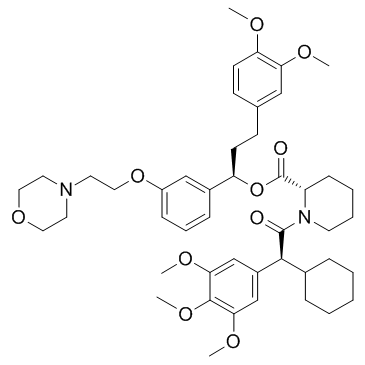
-
GC38060
Shield-1
Shield-1 (Shld1) ist ein spezifischer, zellpermeabler und hochaffiner Ligand des FK506-bindenden Proteins-12 (FKBP) und kehrt die Instabilität um, indem es an mutiertes FKBP (mtFKBP) bindet und so eine bedingte Expression von mtFKBP-fusionierten Proteinen ermöglicht.
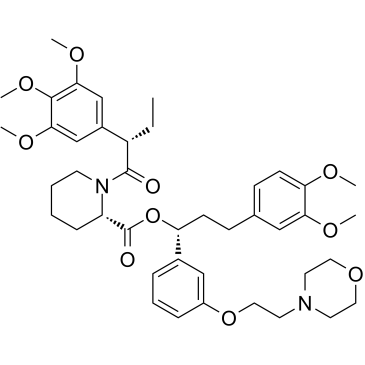
-
GC44899
SLF
SLF ist ein synthetischer Ligand fÜr das FK506-bindende Protein (FKBP) mit einer AffinitÄt von 3,1 μM fÜr FKBP51 und einem IC50 von 2,6 μM fÜr FKBP12. SLF kann bei der Synthese von PROTAC verwendet werden.

-
GC61461
SLF TFA
SLF TFA ist ein synthetischer Ligand fÜr FK506-bindendes Protein (FKBP) mit einer AffinitÄt von 3,1 μM fÜr FKBP51 und einem IC50 von 2,6 μM fÜr FKBP12. SLF TFA kann bei der Synthese von PROTAC verwendet werden.
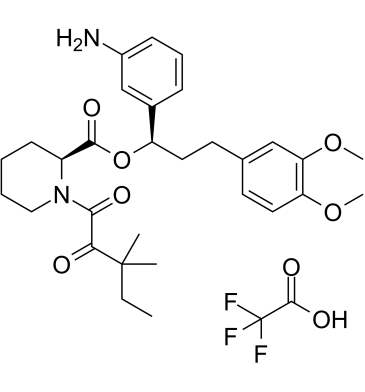
-
GC16233
Tacrolimus (FK506)
Tacrolimus (FK506), ein Makrolid-Antibiotikum mit starken immunsuppressiven Wirkungen, wurde aus Streptomyces tsukubaensis isoliert und wurde zuvor zur Verhinderung von Allografts und zur Behandlung von Autoimmunerkrankungen bei Menschen eingesetzt.
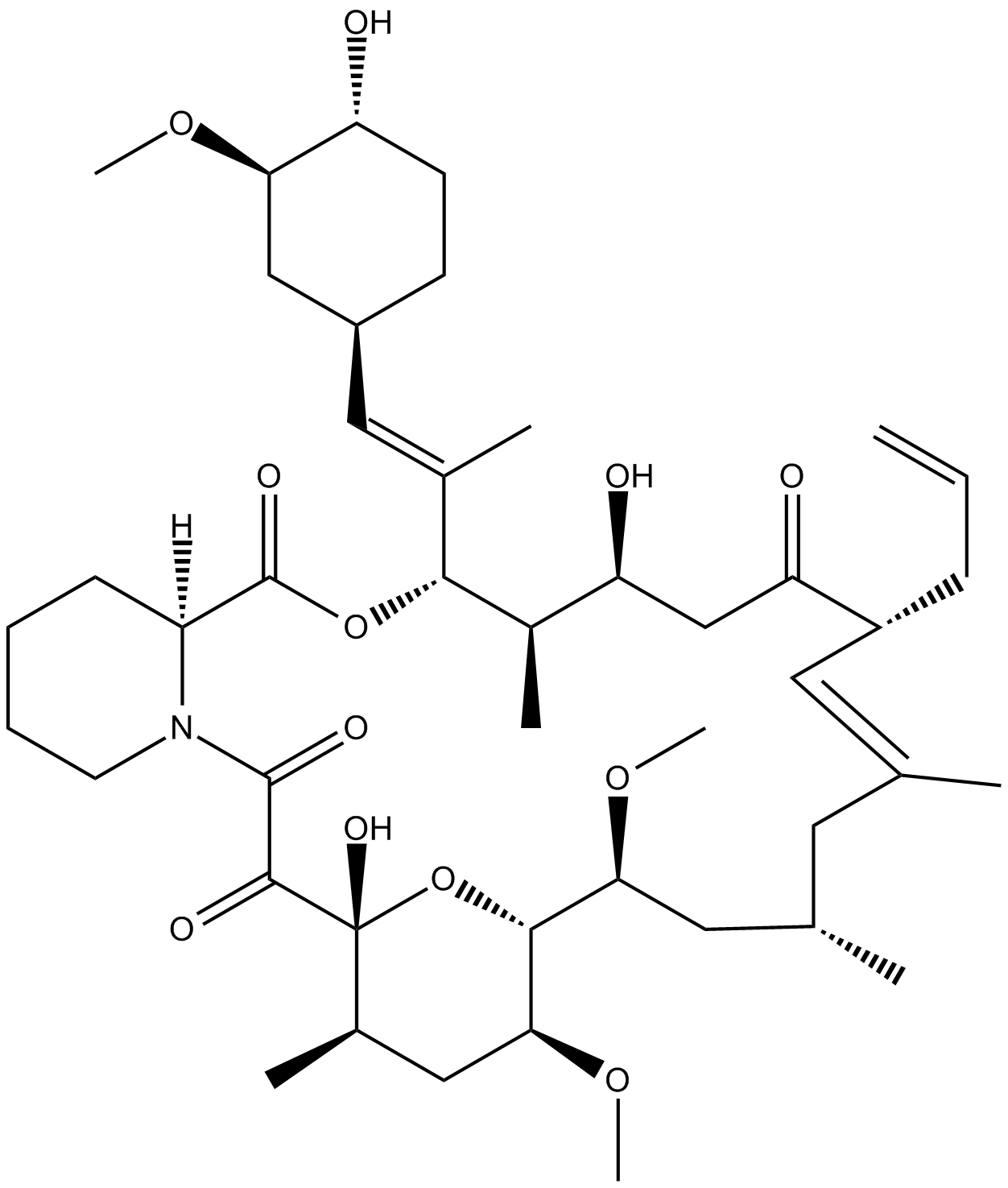
-
GC17995
Tacrolimus monohydrate
Tacrolimus-Monohydrat (FK506-Monohydrat), ein makrozyklisches Lacton, bindet an das FK506-Bindungsprotein (FKBP), um einen Komplex zu bilden, und hemmt die Calcineurin-Phosphatase, die die T-Lymphozyten-Signaltransduktion und die IL-2-Transkription hemmt.
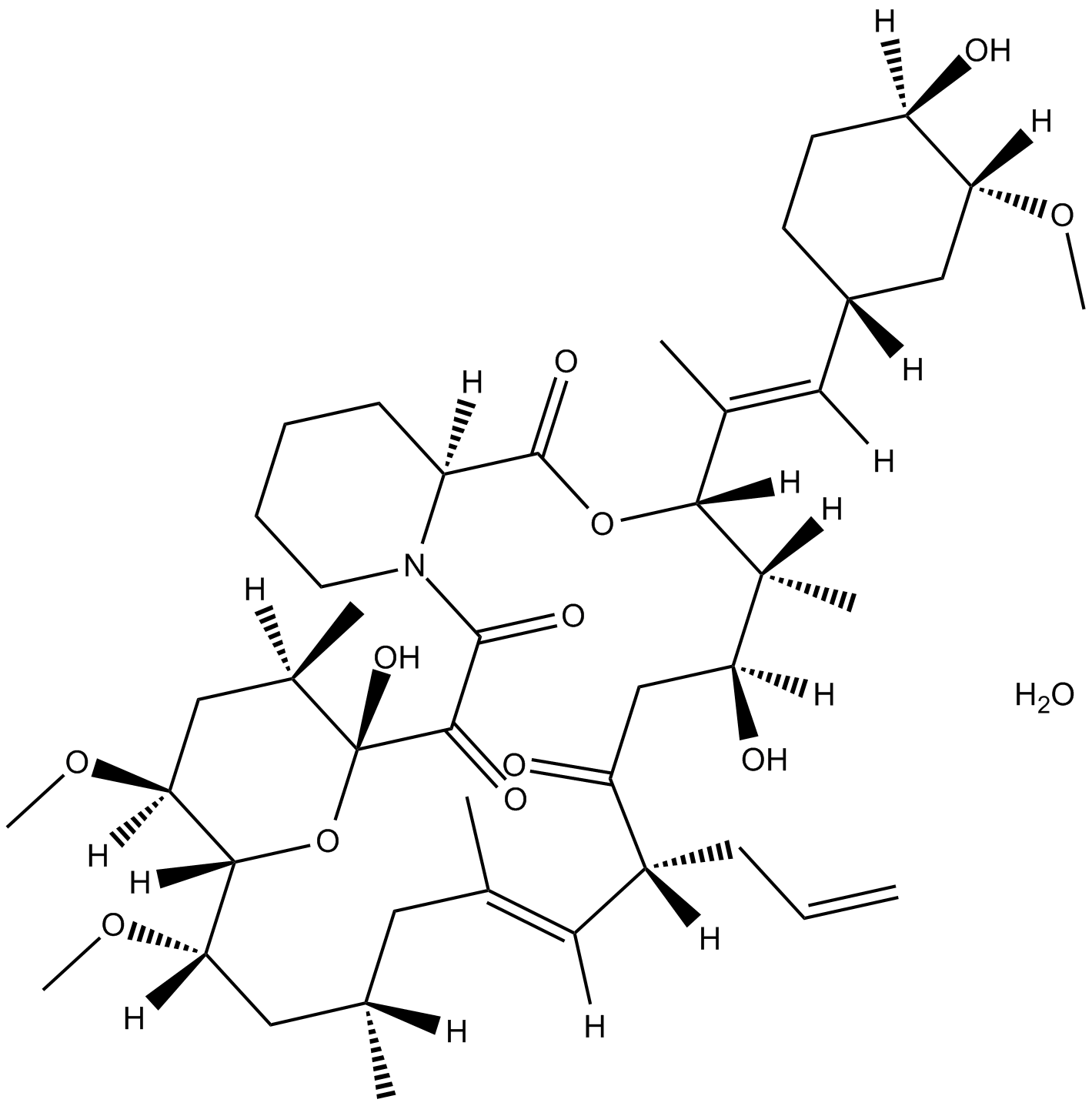
-
GC33200
Target Protein-binding moiety 13
Die Zielprotein-bindende Einheit 13 (PROTAC FKBP12-bindende Einheit 1) ist ein synthetischer Ligand fÜr FKBP (SLF). Die Zielprotein-bindende Einheit 13 (PROTAC FKBP12-bindende Einheit 1) kann bei der Synthese von PROTACs verwendet werden.
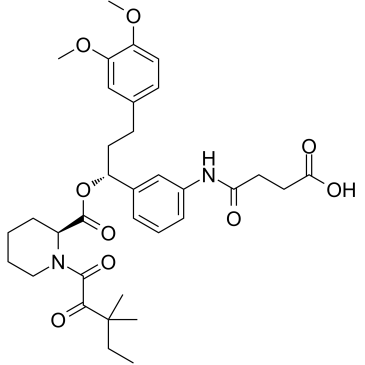
-
GC66370
Zapalog
Zapalog ist ein photospaltbarer niedermolekularer Heterodimerisierer, der verwendet werden kann, um eine physikalische Wechselwirkung zwischen zwei Zielproteinen wiederholt zu initiieren und sofort zu beenden. Zapalog dimerisiert zwei beliebige Proteine, die mit den FKBP- und DHFR-DomÄnen markiert sind, bis Lichteinwirkung seine Photolyse verursacht.
